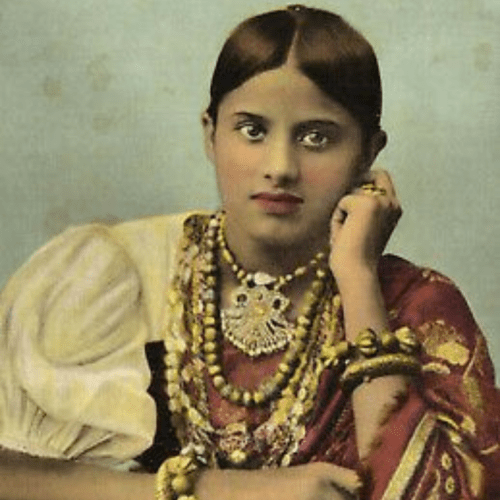- Fashion
The Story of How the Blouse Evolved
- ByRadhika Bhalla

Queens of Mysore by Thomas Hickey, 1805.
Much before the blouse became canonised as being integral to the sari, women of the Indian subcontinent wore the upper garment not with elaborate sleeves and necklines, but in the form of an unstitched fabric. In fact, the blouse only came into existence, as we know it today, around 170 years ago. And its invention can be credited to a young, dynamic lady who wouldn’t take ‘no’ for an answer.
In ancient India, women wore an unstitched fabric over their chest…the stanapatta, for instance, was a loose band that was wrapped around the torso. Married women wore it to cover their breasts, and it was even embellished at times, which later inspired the design of the choli and the blouse.

It was only in the 1860s that Jnanadanandini Devi, a social reformer and the sister-in-law of Rabindranath Tagore, decided to create the blouse after being denied entry to a club under the British Raj. Jnanadanandini was an independent-thinking woman, and she moved to Mumbai from Kolkata when her husband, Satyendranath Tagore, was transferred there as the first Indian to become a Civil Service officer.


Once in Mumbai, Jnanadanandini began socialising in European circles, but the strict code of dressing put her at a disadvantage—her Bengali style of draping the sari wasn’t considered ‘proper’ or refined. The dress code required her to cover her chest ‘appropriately’, and so, the young Jnanadanandini took matters in her own hands by inventing a fusion of the western and Indian blouse. Jnanadanandini added sleeves to it, and took inspiration from regional styles. With it, the blouse came to represent ideals of ‘respectability’ and ‘propriety’, influenced by Victorian ideals.

Along with this, Jnanadanandini adapted the Parsi style of draping the sari, but here too, she found that her hand movements were restricted by the pallu falling on the right arm. So, she switched it around and draped the pallu on her left shoulder to keep her right hand free for movement.

Jnanadanandini wanted to teach other women how to wear this new style of the sari, and she went on to advertise about it in the monthly Bamabodhini Patrika. As the blouse gained popularity over the course of the 20th century, many iterations began to emerge. The Flapper Era of the 1920s saw the sleeveless blouse, and the ’60s witnessed the boatneck blouse. In the decades to come, blouses with collars and puffed-sleeves gained favour, along with varying necklines. Today, we even have blouses in the style of bikini tops.

Over time, the blouse became inextricably linked with ‘decency’. But there was once a time when the piece of garment stood for something different…for not giving in, and for being creative in every way.


All images: Courtesy Pinterest and Instagram





